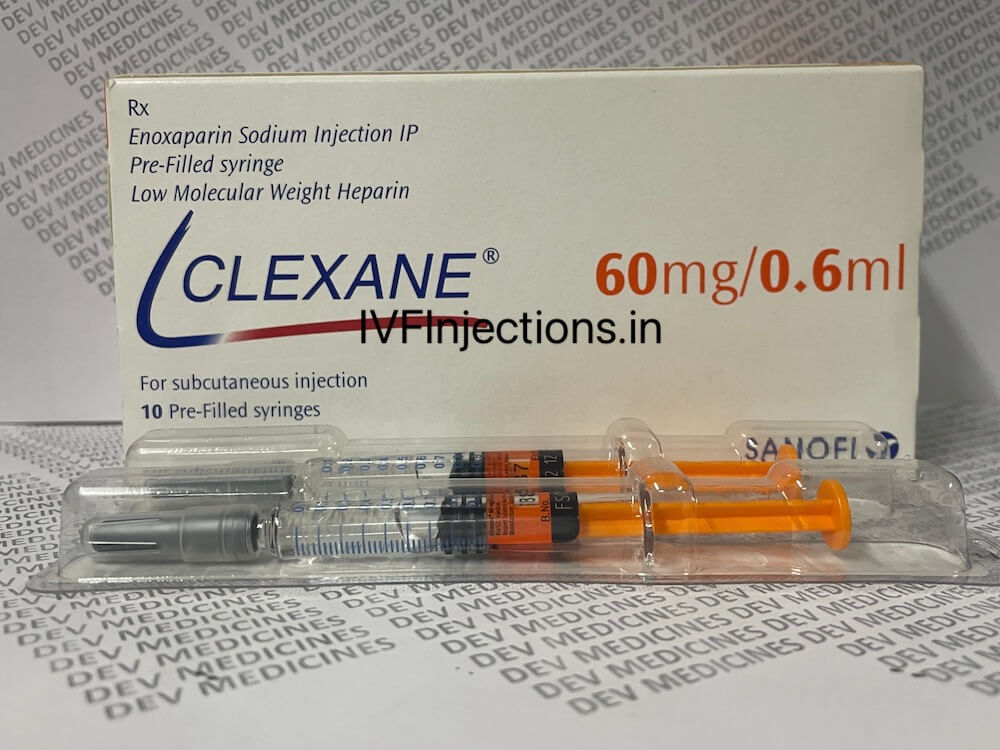Indications and Uses
Clexane 60 mg Injection is primarily indicated for:
Prevention of Deep Vein Thrombosis (DVT): Especially after surgeries such as hip or knee replacement, where patients are at a higher risk of developing clots.
Treatment of DVT and Pulmonary Embolism (PE): DVT is a condition where blood clots form in the deep veins, usually in the legs, and PE occurs when these clots travel to the lungs.
Prevention of Clot Formation in Patients with Unstable Angina or Non-ST Segment Elevation Myocardial Infarction (NSTEMI): These heart conditions are associated with a high risk of clot formation.
Clot Prevention in Hemodialysis Patients: During hemodialysis, patients are at an increased risk of clotting, and Clexane helps prevent this.
Mechanism of Action
Enoxaparin, the active ingredient in Clexane, enhances the activity of antithrombin III, a protein in the blood that inhibits clotting factors Xa and IIa (thrombin). By inhibiting these factors, Clexane reduces the formation of new clots and prevents existing clots from growing larger.
Dosage and Administration
The dosage of Clexane 60 mg Injection varies depending on the condition being treated or prevented. It is usually administered via subcutaneous injection, often in the abdominal area.
For DVT Prevention Post-Surgery: The typical dose is 40 mg once daily, starting 12 hours before surgery and continuing for 7-10 days or until the patient is sufficiently mobile.
For DVT and PE Treatment: The dose is typically 1 mg/kg body weight every 12 hours or 1.5 mg/kg once daily.
For Unstable Angina or NSTEMI: A typical regimen is 1 mg/kg every 12 hours, usually alongside aspirin.
For Clot Prevention in Hemodialysis: The dosage may vary based on the length of the dialysis session and the patient’s specific needs.
It is crucial to follow the healthcare provider’s instructions precisely, as incorrect dosing can lead to serious complications.
Side Effects and Precautions
Common Side Effects
Bruising or Bleeding: Because Clexane is an anticoagulant, it can increase the risk of bleeding. Patients might notice bruising at injection sites or bleeding from the nose or gums.
Injection Site Reactions: Pain, redness, or swelling at the injection site are common but usually mild.
Serious Side Effects
Severe Bleeding: Any signs of unusual bleeding, such as dark stools, pink or brown urine, or prolonged bleeding from cuts, should be reported to a healthcare provider immediately.
Allergic Reactions: Symptoms like rash, itching, or swelling (especially of the face, tongue, or throat) require urgent medical attention.
Precautions
Medical History: Patients should inform their doctor of their complete medical history, especially if they have bleeding disorders, recent surgery, or kidney disease.
Drug Interactions: Clexane can interact with other medications, such as other anticoagulants, nonsteroidal anti-inflammatory drugs (NSAIDs), and certain herbal supplements. Lonopin Injection in Delhi It is essential to discuss all medications and supplements with a healthcare provider.
Regular Monitoring: Patients on Clexane therapy may require regular blood tests to monitor their clotting status and kidney function.





Comments